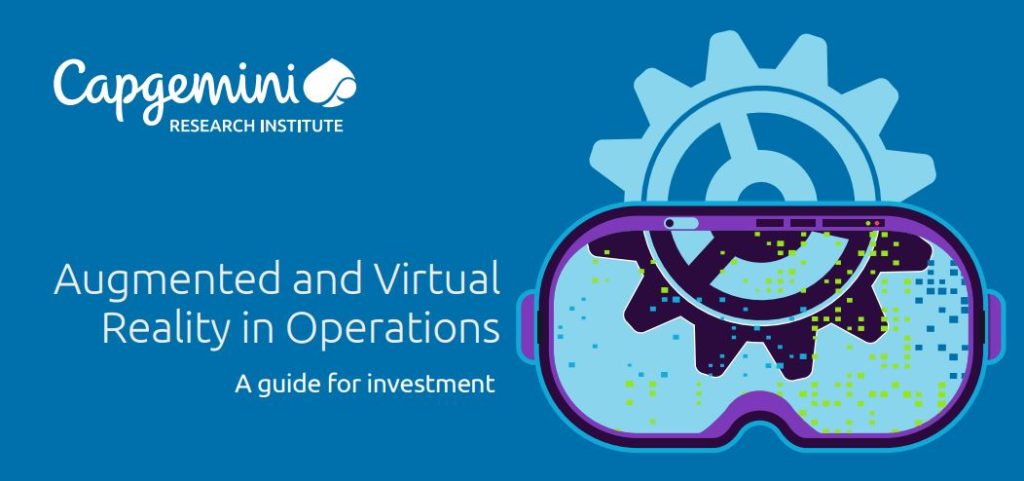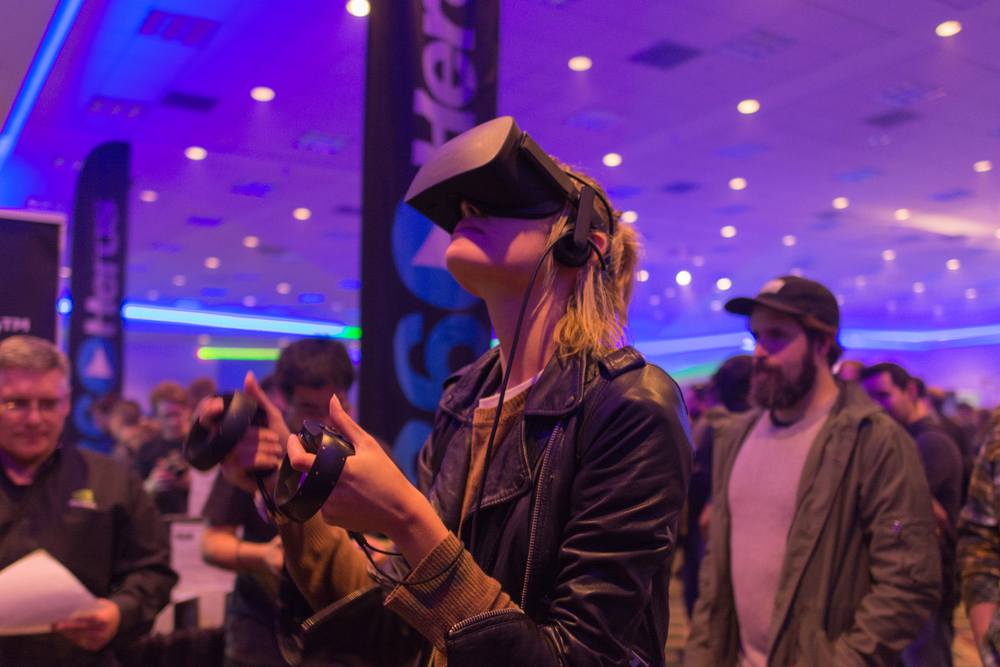Capgemini Report Discusses Augmented and Virtual Reality Technologies

The Capgemini Research Institute released a report that has revealed that enterprises are using augmented reality (AR) and virtual reality (VR) technologies to enhance their business operations. The report, “Augmented and Virtual Reality in Operations: A guide for investment” has found that 82% of companies currently implementing AR/VR say the benefits are either meeting or exceeding their expectations. However, a shortage of in-house expertise and insufficient back-end infrastructures are significant barriers to growth. The new report, which surveyed more than 700 executives in the automotive, manufacturing and utilities sectors, with considerable knowledge of their organization’s AR/VR initiatives, found that 50% of enterprises currently not implementing AR and VR will start exploring immersive technologies for their business operations within the next three years. These include using AR to remotely access real-time help from experts on a wearable or handheld device, and VR to train employees. Some 46% of companies believe the technology will become mainstream in their organizations within the next three years, while a further 38% think it will become mainstream in their organizations in the next three to five years. Organizations are seeing the benefits of immersive technology The report revealed that while AR is more complex to implement, organizations perceive it as more beneficial than VR. It highlights that AR generates productivity benefits thanks to streamlined workflows, citing examples such as, technicians at Porsche using AR glasses that project step-by-step bulletins and schematic drawings across the line of vision, while also allowing remote experts the ability to see what the technician sees to provide feedback. This solution can shorten service resolution time by up to 40%. VR improves efficiency and safety, and helps manage complexities of tasks thereby boosting productivity. For instance, the report highlights that VR is used at Airbus to integrate digital mock-ups into production environments, giving assembly workers access to complete 3D models of the aircraft under production. This reduces the time required to inspect from three weeks to three days. Additionally, according to the report, at least three in four (75%) companies with large-scale AR/VR implementations can attest to operational benefits of over 10%. Repair and maintenance, design and assembly form most implemented use cases The report found that across the automotive, manufacturing and utilities sectors, the most popular uses of AR and VR are repair and maintenance, and design and assembly. Between 29% and 31% of companies using AR and/or VR are using it for repair and maintenance, specifically to consult digital reference materials (31%), seek a remote expert (30%), digitally view components not in physical view (30%) and superimpose step-by-step instructions on workstations (29%). For design and assembly, companies using VR and/or AR are using it to view digital assembly instructions (28%), simulate product performance in extreme conditions (27%), visualize infrastructures from various angles (27%) and overlay design components onto existing modules (26%). For example, the report cites Ford’s use of VR technology to identify, and then engineer alternative actions by humans captured by body motion sensors during assembling, which has resulted in a 70% drop in employee injuries and a 90% reduction in ergonomic issues. AR is seen as more relevant and widely implemented than VR The report revealed that two-thirds of all the organizations surveyed believe that AR is more applicable to their business operations than VR. While VR has been found to enhance a solo, immersive user experience that is isolated from the real world, AR connects the digital world to the real world, and therefore supports a number of breakthrough use-cases. Of companies deploying AR, 45% are implementing the technology, compared with just 36% of those companies using VR (the rest of the companies are still at the experimentation phase). US and China most aggressive investors in AR/VR The report found that companies in the US and China are currently leading the implementation race, with over 50% of companies surveyed already implementing immersive technology for business operations. Whereas over 50% of companies in France, Germany, the Nordics and United Kingdom are still only experimenting with AR/VR initiatives. Four key strategies to expand AR/VR initiatives The report identified a group of “early achievers” who are driving the most benefits from their immersive technology initiatives. Representing 16% of the total companies surveyed, these organizations are focusing on four key strategies to expand their AR/VR initiatives: Put a centralized governance model in place and build AR/VR awareness: 78% of early achievers have dedicated central teams or innovation centers to manage the organization’s overall AR/VR activities, compared with only 51% of other companies. Invest in upgrading talent to gear up for future adoption: 93% of early achievers are investing heavily in agile, in-house teams of experts, compared with only 76% of the rest of companies surveyed. Focus on the right use cases that provide lasting value and support employees: Finding the right use case and testing its applicability is one of the top three priorities for early achievers, whereas currently, the inability to identify a use case is a challenge for more than 50% of organizations. Prepare technology infrastructure to integrate AR/VR: The report found that a lack of data and technology readiness are major barriers to AR/VR adoption. For enterprises, the need of the hour is to ensure smooth AR/VR integration with their existing technologies as well as their culture.
Oculus Rift Virtual Reality Headset Divides Fans

As if real life wasnât enough, this week saw the dawning of a new era in virtual reality with the release of the Oculus Rift virtual reality headset on Monday. The first of its kind made to be available to consumers, Oculus Rift has attracted the hype of the tech savvy on the street and major tech executives alike and, the latest in VR technology could be yours for a princely $599 (equivalent to around £420). The launch was hugely anticipated following false starts and promises over two years. Following Facebookâs buy-out of the firm responsible for the pioneering software back in 2014 however, development of a prototype was quickly underway, and it seems Mark Zuckerberg may well have yet another success story on his hands. Or, not quite. Because despite being the first on the scene with an earlier release date than either HTC or Sonyâs attempts (due later this year), Oculus Rift has, for some, failed to live up to expectations. World leading technology review platform, CNET, is amongst those passing judgement on the VR headset and Senior Editor, Jeff Bakalar seems to suggest the technology is far from where it needs to be. Oculus can currently only detect head movement though customers can utilise a 3D functionality add-on later this year. He was nevertheless enthusiastic about the potential of VR in the future, even suggesting that it might be possible to project images directly to the retina rather than requiring customers to view images via a lens at a screen. In the here and now however, Bakalar suggests that HTCâs Vive virtual reality headset will offer the best overall experience for customers when itâs released later this month. Some reviewers have reported Ocula Riftâs virtual reality experience was nauseating while others have praised its ability to transport customers to another place, either world of film or gameplay. Criticisms have also been made against anything from its difficult interface to its too tight straps. Whatever the reaction, of course, itâs no doubt a reaction that Oculus Rift was after â particular when it put forward the release date. And though it might be flawed and later enhanced by either itself or other firms, Oculus Rift has sparked new attention for the VR sector and is sure to make waves in the real world.


